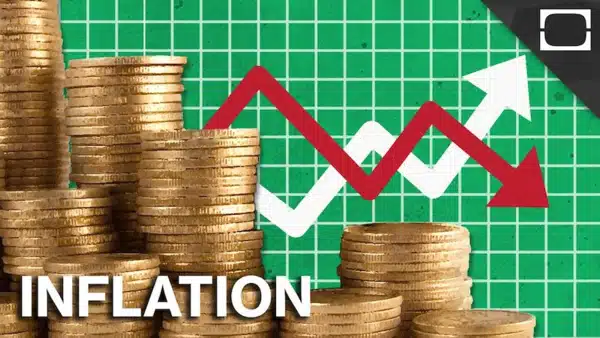Introduction: Rajkotupdates.News : Us Inflation Jumped 7.5 In In 40 Years
Inflation, the gradual increase in prices for goods and services over time, is a critical economic indicator that affects individuals, businesses, and governments alike. In the United States, inflation has seen fluctuations and trends over the past four decades, influencing economic policies, consumer behavior, and financial markets. Let’s delve into how US inflation has evolved over the last 40 years, its impact on various sectors, and what it means for the future.
Defining Inflation
Inflation is commonly measured by the Consumer Price Index (CPI), which tracks changes in the prices of a basket of goods and services typically purchased by households. When inflation rises, each dollar buys fewer goods and services, eroding purchasing power.
Types of Inflation:
- Demand-Pull Inflation: Occurs when demand for goods and services exceeds supply, driving prices up.
- Cost-Push Inflation: Results from increased production costs, such as wages or raw materials, passed on to consumers.
- Built-In Inflation: Arises when expectations of future price increases prompt wage and price hikes, creating a self-perpetuating cycle.
US Inflation Trends Over 40 Years
Historical Perspective:
- 1980s: High inflation characterized the decade, peaking at double-digit rates due to oil price shocks and expansionary fiscal policies.
- 1990s: Inflation moderated with improved economic stability and technological advancements.
- 2000s: Varied inflation rates, influenced by global events like the Dot-com bubble and post-9/11 economic shifts.
- 2010s: Post-financial crisis recovery saw subdued inflation amid economic stimulus measures and global trade dynamics.
- 2020s: Recent years have seen a resurgence in inflation concerns amid supply chain disruptions, pandemic recoveries, and policy responses.
Factors Influencing US Inflation
Economic Drivers:
- Monetary Policy: Actions by the Federal Reserve to control interest rates and money supply impact inflation rates.
- Fiscal Policy: Government spending and taxation policies influence aggregate demand and inflation expectations.
- Global Factors: International trade, commodity prices, and geopolitical events can affect domestic inflation.
Structural Changes:
- Technology: Advances in productivity and digitalization may mitigate inflationary pressures.
- Demographics: Aging populations and labor market dynamics impact wage growth and consumer spending.
- Energy Prices: Fluctuations in oil and gas prices can influence overall price levels and inflation expectations.
Impact of Inflation
Economic Consequences:
- Purchasing Power: Inflation reduces the value of money, affecting consumer spending and savings.
- Interest Rates: Higher inflation rates may lead to increased borrowing costs and investment decisions.
- Income Distribution: Inflation can impact income distribution, affecting lower-income groups disproportionately.
Sector-Specific Effects:
- Housing: Rising inflation can drive up housing costs, affecting affordability and rental markets.
- Healthcare: Medical inflation impacts healthcare costs and insurance premiums.
- Education: Tuition inflation affects access to higher education and student loan burdens.
Addressing Inflation Challenges
Policy Responses:
- Monetary Tightening: Central banks may raise interest rates to curb inflation and stabilize prices.
- Fiscal Restraint: Governments can implement fiscal policies to manage demand and inflation expectations.
- Supply-Side Measures: Enhancing productivity and infrastructure investments to alleviate supply constraints.
Consumer Strategies:
- Budgeting: Adjusting spending habits to account for rising prices and inflationary pressures.
- Investment Diversification: Allocating assets across different asset classes to hedge against inflation risks.
- Financial Planning: Seeking advice on managing savings, investments, and retirement plans amidst inflation concerns.
Future Outlook
Looking ahead, the trajectory of US inflation will depend on a complex interplay of global economic conditions, policy responses, and structural changes. Managing inflation expectations and fostering sustainable economic growth will be key priorities for policymakers, businesses, and households alike.
Conclusion
US inflation has undergone significant shifts over the past 40 years, reflecting broader economic trends, policy decisions, and global dynamics. Understanding the causes, impacts, and strategies to address inflationary pressures is essential for navigating economic uncertainties and planning for the future. As inflation remains a central concern in economic discourse, monitoring its trends and implications will continue to be crucial for informed decision-making at all levels of society.

